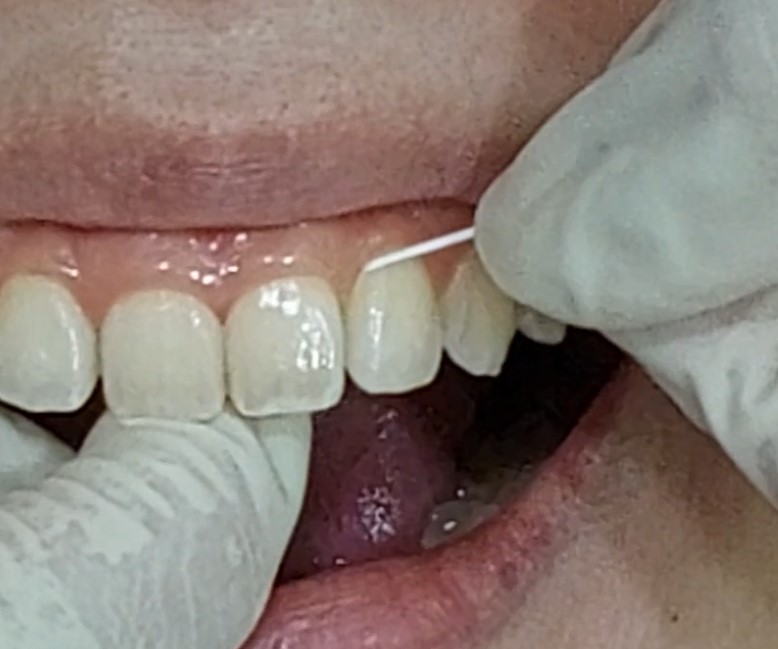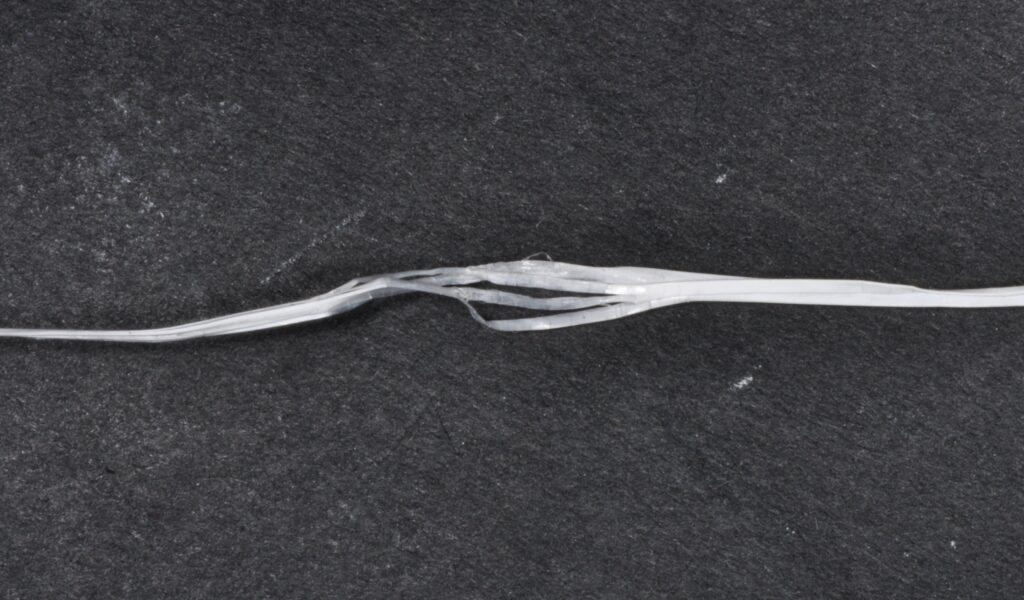Flossing
Flossing – because brushing is not enough
Flossing is an essential part of taking good care of your teeth.
Dental floss cleans the area between your teeth — places where your toothbrush cannot reach effectively.
Flossing removes debris
Food debris left between your teeth build up into plaque, the soft film of bacteria that leads to cavities and gum disease. Flossing removes pieces of food that can lead to plaque and helps to remove plaque where it is formed.
How to hold dental floss
There are different techniques for holding floss. Whichever technique you use, what is most important to remember is that the actual working portion of the floss is only 2-3cm.
Pinch floss between thumbs and index fingers, leaving 2-3cm of floss in between.
Use your fingers and thumbs to guide the floss between the teeth using a zig-zag motion or a sawing action. Be careful not to let the floss snap between the teeth and land hard on the gum. Using waxed floss or floss coated with PTFE or Teflon will help the floss to slide between the teeth.
Once the floss passes between the teeth, form a C shape with the floss against the tooth i.e. draw it snugly around a tooth. Then, slide the floss up and down against the tooth to clean the plaque and food debris away.
In addition to sweeping the floss up and down on the surface of your tooth, you also need to clean the groove between your gum and tooth. Keeping the floss firmly against the side of your tooth, go just under the gum line on both sides of each tooth to sweep out any hidden debris.

You need to floss all your teeth – including the back teeth.
It may require a little more dexterity but it can be done. Watch this video
- Flossing will push the teeth apart or create gaps between the teeth
- Flossing will cause bleeding
Healthy gums do not bleed.
- Flossing is painful.
If you experience pain when flossing, ask for help. It could be that your technique of flossing is incorrect. Or, there may be a dental problem like tooth decay or a defective filling that is causing the discomfort.
- Flossing takes too much time
Whenever you find food stuck between your teeth it is to your benefit to remove it before it causes discomfort or rots to give you bad breath. Keeping a small pack of floss handy in your bag or office drawer, allows you to remove the offending food particles in a quick and timely manner. A few minutes of daily hygiene can save hours in the dental chair!
- A toothpick is as effective as floss
No. A toothpick merely pushes out chunks of food debris between teeth. It does not sweep the sides of the teeth where plaque accumulate. Toothpicks cannot get into the narrow crevices between overlapping teeth. If used incorrectly, it can cause injury to the gums.
If your floss tears or frays …

If you have difficulty passing floss between your teeth, try using a waxed floss or floss coated with Teflon or PTFE. Such floss is more “slippery” and easier to slide the floss between the teeth. If you find that the floss often tears or frays, it could be due to poor technique or a defective filling. In either case, visit us to find out what could be the problem
The benefits of flossing
- By removing food particles and preventing plaque from building up, flossing everyday reduces your risk of tooth decay and gum disease.
- Flossing can also prevent food from decaying between your teeth which, in turn, may help prevent bad breath. A bad smell or taste after flossing could indicate that you have a dental problem. Check with us how to resolve the problem.
There are alternatives like inter-dental brushes and electric picks. Each method has its pros and cons. We will be happy to discuss these options with you
